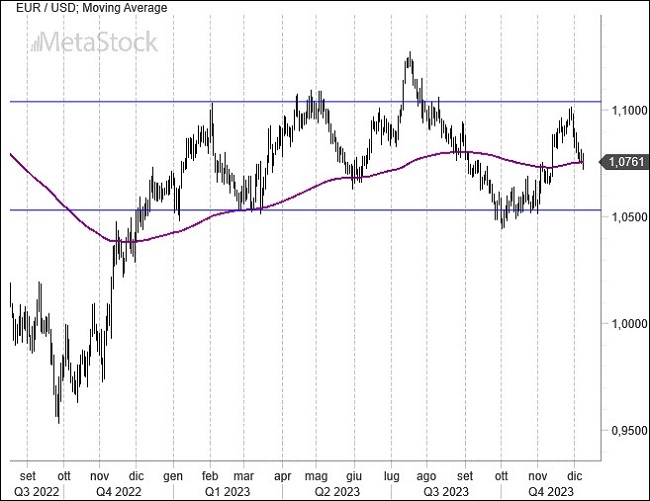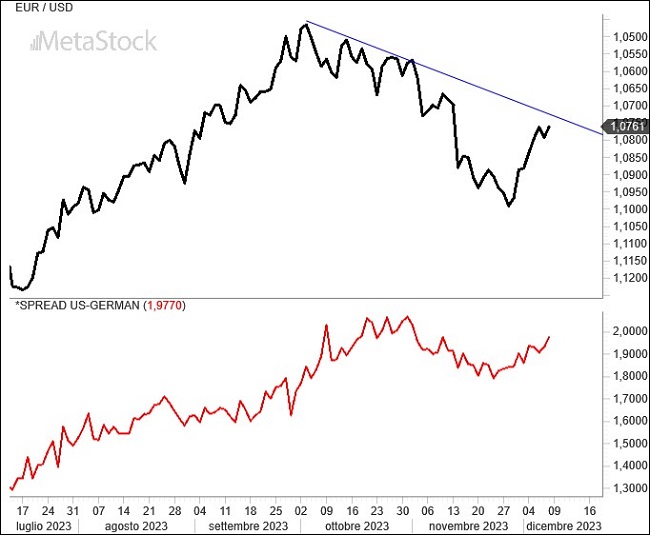- Markets are enthusiastic about the prospect of significant interest rate cuts in 2024. Next week, we will find out if central banks plan to support this view, despite a still robust American economy.
- Europe approaches the end of the year with inflation coming back under control, but at the cost of a noticeably slowing economy. The ECB is expected to make initial rate cuts as early as spring.
- EurUsd tests initial resistances before retreating. For now, there is no trend reversal favoring the euro.
Market Optimism in the Air
The pre-Christmas central bank meetings will be crucial in determining whether market expectations regarding interest rates and currencies are on point. The ECB will step up on December 14th, followed by the Fed on December 18th. Currently, markets are highly optimistic about the 2024 rate trajectory, with predictions of cuts as early as spring, including up to five cuts in both Europe and the United States.
U.S. interest rates continue to fall, as do European ones. The Dollar Index tracks the trajectory of U.S. rates, but when European rates fall more sharply, the euro suffers more than the dollar, as seen in the last week. The yield spread between the U.S. and Germany at two years has risen above 200 basis points, influenced by cooler inflation prospects in the Eurozone, partly due to a still critical economic situation.
The contraction of European rate differentials compared to the rest of the world has been intense, with investors rushing to buy fixed-rate securities in anticipation of an ECB rate cut. Consequently, the EurUsd has moved away from the late November highs of 1.10, repositioning itself above previous resistances, now supports, as we will soon see.
Inflation expectations in Europe suggest a 2.5% rate over three years, above the ECB target but lessening the urgency for emergency rate measures. Meanwhile, the U.S. economy continues to tread a steady path. PMI data confirms further improvements, and November employment figures show a drop in unemployment and nearly 200,000 new payrolls, indicating that celebrating the end of the Fed’s tight policy might be premature.
Technical Analysis – The 2023 EurUsd Barrier Holds Firm
Aside from a summer surge, the 1.10 resistance on EurUsd has proven unbreakable throughout 2023, frustrating those hoping for a weaker dollar. The market thus must yield to a level that shows how much money is ready to jump into the dollar at the slightest sign of weakness. Analysis of hedge fund positions in futures markets currently reveals no significant excesses. In fact, it seems the euro is still overvalued by investors. The sense is of a balance set to continue, with the 200-day moving average occasionally acting as the upper or lower bound for various currency movements.

The correlation between the U.S.-Germany rate differential and EurUsd is functioning again. The narrowing yield spread between 10-year U.S. and German bonds towards 200 basis points has spurred a strong reaction in the dollar, with EurUsd returning to significant support levels. These will likely represent the technical threshold on which the market will hover until the next central bank meetings.


Leave a Reply
You must be logged in to post a comment.